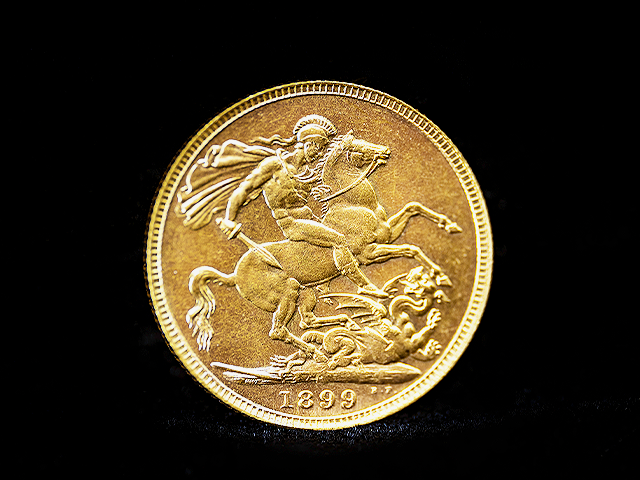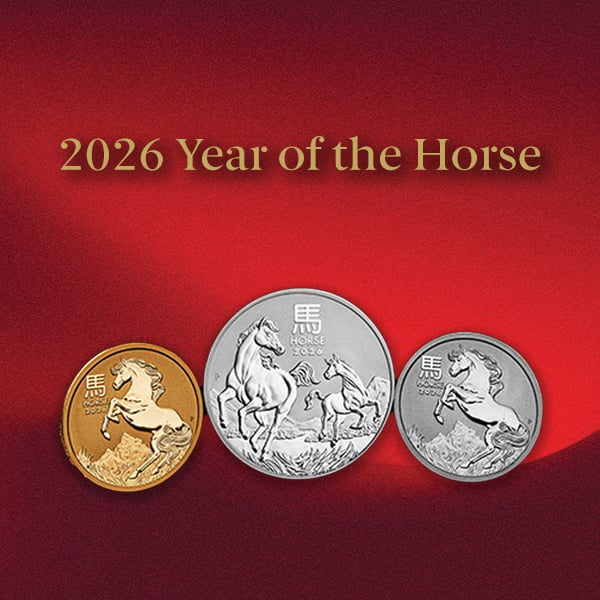The Sovereign – A brief history

Few coins carry the weight of history and prestige like the British gold Sovereign. Born in the age of the Tudors and reborn in the modern era, the Sovereign has become a symbol of royal authority, global trade, and timeless design.
This blog explores the rich history of the Sovereign, its fascinating journey through branch mints across the British Empire, and its enduring appeal as a modern investment and prized collectable.
A symbol of power
The first Sovereign was struck in 1489 under the reign of King Henry VII. Following the turbulent Wars of the Roses, Henry VII sought to cement his authority and the legitimacy of the Tudor dynasty. He commissioned a magnificent new gold coin, the largest ever seen in England, as a powerful statement of stability and wealth.
Named the "Sovereign”, the coin was a masterpiece of its time. The obverse featured a grand portrait of the King enthroned in full coronation regalia, holding his orb and sceptre. The reverse depicted the Tudor rose with the royal arms at its centre. Weighing half a troy ounce and valued at one pound sterling (20 shillings), this was not a coin for daily transactions. It was a tool of state, used for international payments and presentations to foreign dignitaries.
Successive Tudor monarchs, including Henry VIII and Elizabeth I, continued to issue their own versions of the Sovereign, each reflecting their own style and reinforcing the power of the Crown.

A portrait of Henry VII
The hiatus and rebirth of the Sovereign
After the reign of James I, who renamed the coin the "Unite" to symbolise the union of the English and Scottish crowns, the original Sovereign disappeared from circulation for nearly 200 years.
The Sovereign was then reborn in 1817 following the Great Recoinage of 1816. The Napoleonic Wars had wreaked havoc on Britain's economy, leading to a shortage of coins. As part of a major currency overhaul, the government decided to reintroduce a one-pound gold coin. This new coin was named the Sovereign in homage to its Tudor predecessor.
This modern Sovereign was different. It was smaller and lighter, struck in 22-carat gold and weighing approximately 7.98 grams. Its most defining feature was the new reverse design by Benedetto Pistrucci: a dramatic depiction of St. George on horseback slaying a dragon. This iconic image has become synonymous with the Sovereign and remains in use today.
The coin of the empire
The 19th century was the golden age of the Sovereign. As the British Empire expanded, the Sovereign became the world's most recognised and trusted coin. Its precise weight and gold purity made it a de facto global currency, facilitating trade across continents.
To meet overwhelming demand, The Royal Mint opened branch mints across the Empire. Sovereigns were struck in Australia (Sydney, Melbourne, and Perth), Canada (Ottawa), South Africa (Pretoria), and India (Bombay). These coins are identifiable by small mintmarks, making them a fascinating area for collectors.
Here at The Perth Mint, the first coin to be struck, was one of 106 million sovereigns made in the years to 1931. Each coin featured Benedetto Pistrucci’s classical St George and the dragon reverse design, and a distinguishing ‘P’ mintmark.
For nearly a century, the Sovereign was a staple of the British economy, circulating freely. However, the outbreak of the First World War in 1914 brought this era to an end. The government urged citizens to exchange their gold coins for war bonds, and the Sovereign largely vanished from public circulation, replaced by paper banknotes. Although production continued at branch mints for several years, its role as everyday money was over.

The Perth Mint, 1899 Sovereign coin
The modern sovereign: Investment and collectable
After a long pause, The Royal Mint resumed production of the Sovereign in 1957. But its purpose had changed. It was no longer intended for circulation but was produced as a bullion coin for investors and a collectable for numismatists (coin collectors).
Today, the Sovereign is highly valued for several reasons:
- Gold content: A Sovereign coin contains approximately 7.32 grams (0.2354 troy ounces) of pure gold, making it an accessible way to invest in the precious metal.
- Historical significance: Owning a Sovereign is owning a piece of history. Each coin connects its owner to the monarchs, events, and artistry of its time.
- Collectable: The vast range of dates, monarchs, and mintmarks offers endless opportunities for collectors. Special editions and proof versions with unique designs are also released regularly, adding to their appeal.
An enduring legacy
The Sovereign’s story is one of resilience, prestige, and timeless appeal. It has survived wars, economic crises, and the fall of empires to emerge in the 21st century as a globally respected asset and collectable.
Whether you're drawn to its historical significance, its artistic beauty, or its intrinsic gold value, the Sovereign offers more than just a coin—it offers a legacy you can hold in your hand.
Explore our full range of Sovereign coins here.









